Facts about Snow Leopard – Known throughout the world for their snow-like, beautiful fur as well as elusive behavior, the endangered snow leopard can be found in Central Asia. Living in the rugged mountains, snow leopards are perfect for adjusting to the cold. The fur is known to be beautiful with the combination of white and gray. Their feet are fur-lined, acting as natural snow boots. This animal makes you want to look up for the facts about snow leopard.
Currently, their population shows that there are only about 4,000 to 6,500 snow leopards out there in the wild. Snow leopards has been showing a dramatic decline of population due to the vanishing habitats, killings, illegal trade for their fur as well as body parts that are used for traditional Chinese medicine.
Other than that, there are more interesting facts about snow leopards that you’d want to know. So, here are 19 facts about these rare big cats that you’d want to know.
Read: Interesting Facts about White Tiger
Interesting Facts about Snow Leopard
1. First Described in 1777
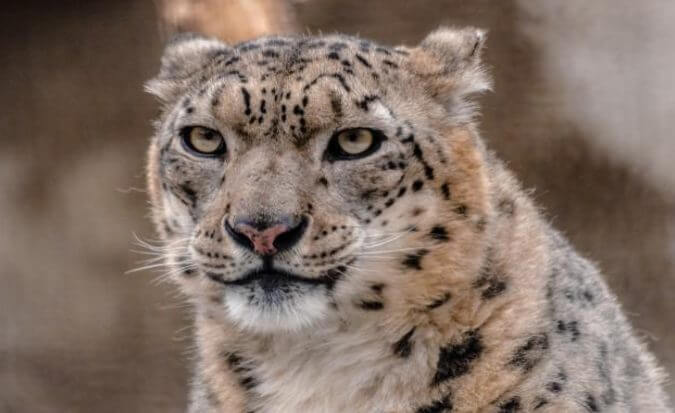
Being the only living big cats in the cold deserts of Asia, snow leopard was first described by a German naturalist, Johann Christian Daniel von Schreber in 1777.
Snow leopard was mentioned in his publication. In the illustration, it was referred to Felis uncia, living in Barbary, Persia, East India, and China.
Read: Fun Facts about Black Panther
2. Classification Changed
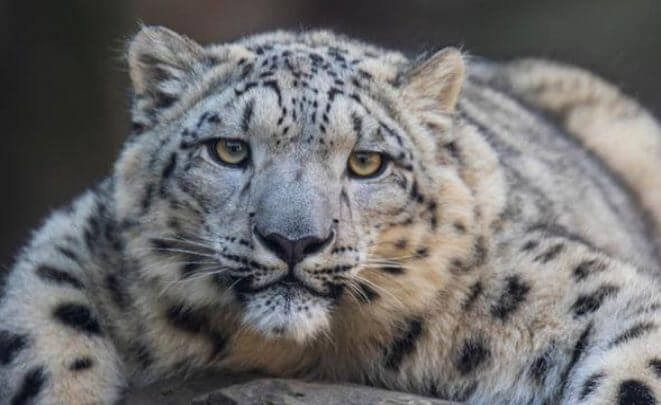
After being named as Felis uncia by Schreber, it was proposed later on in 1854 by a British zoologist, John Edward Gray. Then, a British zoologist, Reginald Innes Pocock confirmed regarding this classification.
The name was attributed into Uncia uncia. Therefore, snow leopard was then classified into the genus Uncia. Finally, in 2008, snow leopards’ classification changed into the Panthera genus.
Read: Facts about a Jaguar
3. Relate More to Tiger
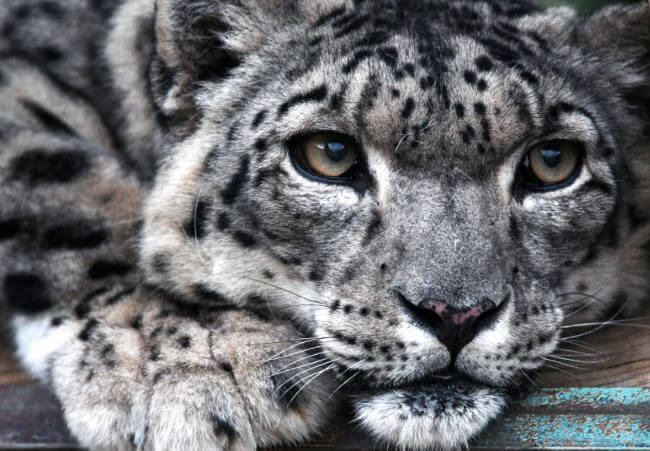
Even though snow leopards are classified into the genus Panthera, they resemble a great amount of similarity to tigers.
This facts about snow leopard is because they are closely related in the evolutionary tree, which means they share a lot of common ancestors. It is estimated that they were parting from their ancestors around 2 million years ago.
Read: Random Facts about Animals
4. White Belly
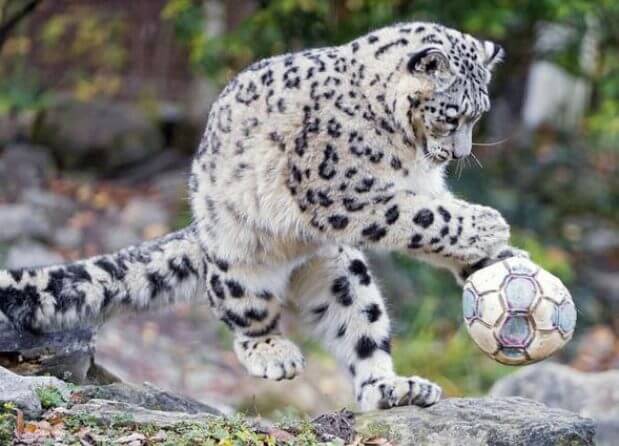
The belly of a snow leopard is white. Snow leopard’s stomach is covered in fur that is nearly 12 cm thick. The hair grows even thicker during cold seasons to keep them cold. This is how they are able to survive in the cold as well as harsh mountain climates.
The fur is white and yellowish, with some gray spots. These spots are helping them to camouflage and blend into their natural surroundings, to better the chance of them sneaking towards their prey.
5. Smaller Body
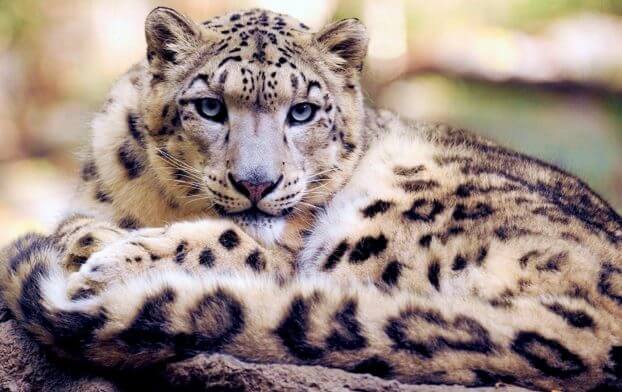
Compared to the other Panthera, the body of a snow leopard is smaller. The front legs are short, but the back legs are long so they can glide up to six times their body length.
That is up to 9 meters in one jump. Moreover, snow leopards have strong chest muscles that help them climb steep mountains. This is how they can easily compete with wild prey.
6. The Size
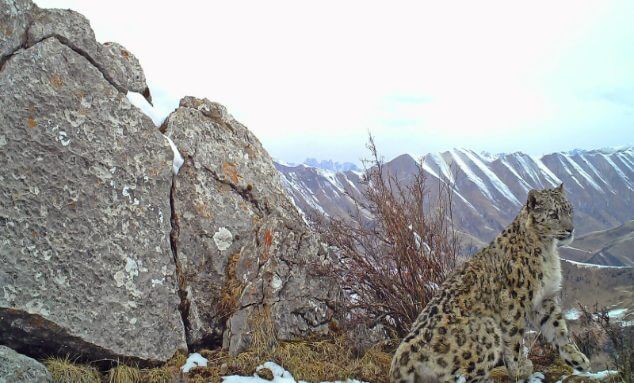
Even though snow leopards are grouped as one of the big cats, they are also the smaller ones. Snow leopards measure about 75 to 150 cm in length from the head to the body. At the shoulder, snow leopard has a height of about 56 cm.
In terms of weight, about 30% of the male snow leopards are larger than females, with the male having weight around 75 kg and female, 25 kg. However, their gender is hard to distinguish.
7. The Tail
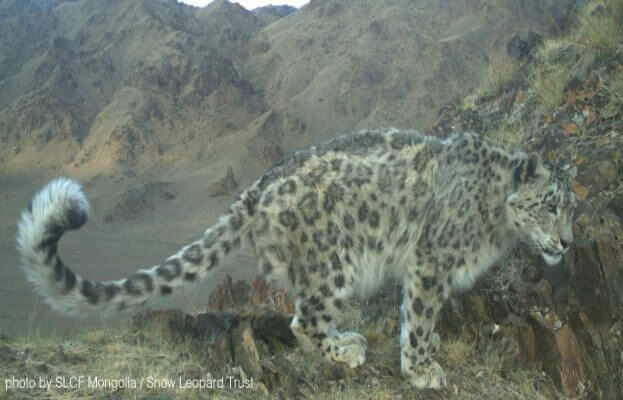
The tail of snow leopards has a length of up to 80 to 150 cm. The tail is thick and massive, which protect them from the harsh weather.
On top of that, the tail also helps their balance. This facts about snow leopard is possible because the length of its tail is almost as long as their entire body. At night, the tail can act as a scarf to keep them warm as well.
8. Facial Feature
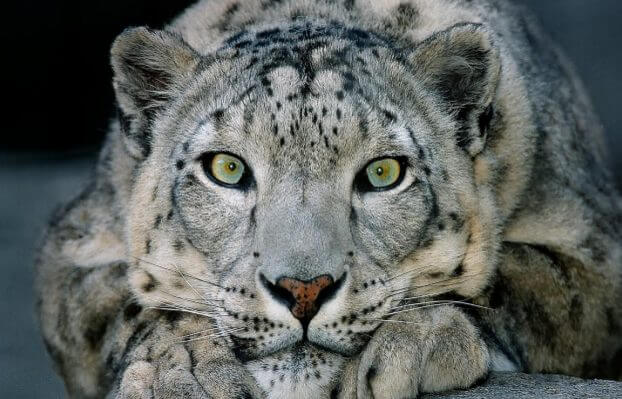
While other big cats usually have golden eyes, the snow leopard is different. The eyes of a snow leopard are usually gray and pale green. Moreover, the facial feature of a snow leopard is amazing. They are born to suit cool environment.
The ears are short and round, helping them reduce heat loss. The nasal cavities are short and wide, preventing cold air of the surroundings to enter before reaching sensitive lungs.
9. Adapting to Cold
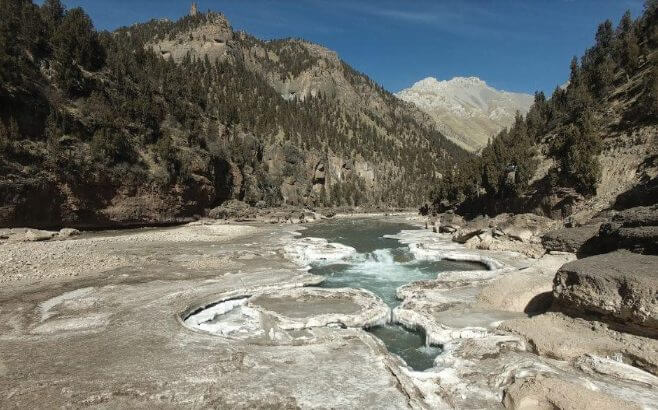
Basically, snow leopards have been adapting with the cold environment. They have been living in the high altitude where there are deep snow and rocky terrain. As they encounter this environment with little vegetation, snow leopards have adapted.
Their chest draws oxygen from thin air, with strong paws and thick tail which are the adaptations to their home. Their body hair has also adjusted with the weather in the snow. They have been showing adaptation to live in the cold mountain environments like this.
10. The Highest Altitude
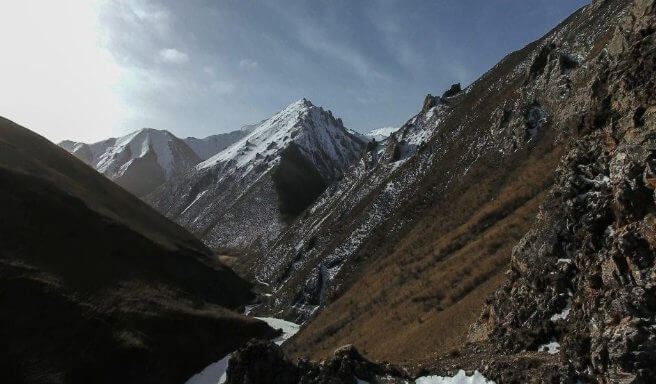
Based on a study conducted by WWF, snow leopards are recorded to have lived in the highest altitude out of all the big cats.
They were documented to live 5,959 meters above the sea level. To compare it, that is the same height as one of the highest mountains. Snow leopards live in cold and dry climate, but have also been found in the lowlands of 1000 meters.
11. Habitat Expanded
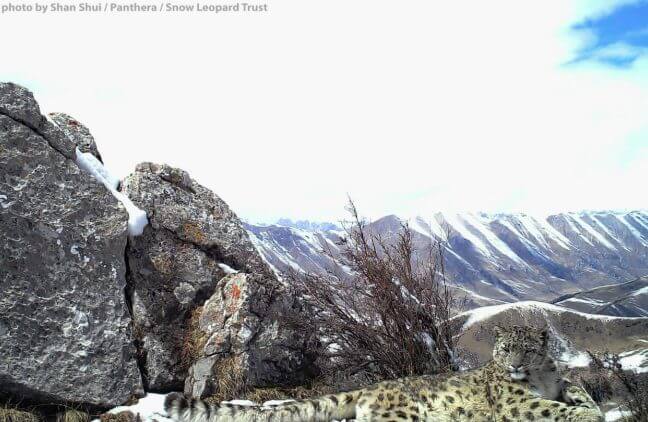
Snow leopards have also expanded their habitat into twelve countries: China, India, Afghanistan, Nepal, Russia, Mongolia, Bhutan, Pakistan, Kazakhstan, Kyrgyzstan, Tajikistan, and Uzbekistan.
Out of all these countries, China holds the position of having top population of snow leopards, which is as much as 60%
12. Large Claws
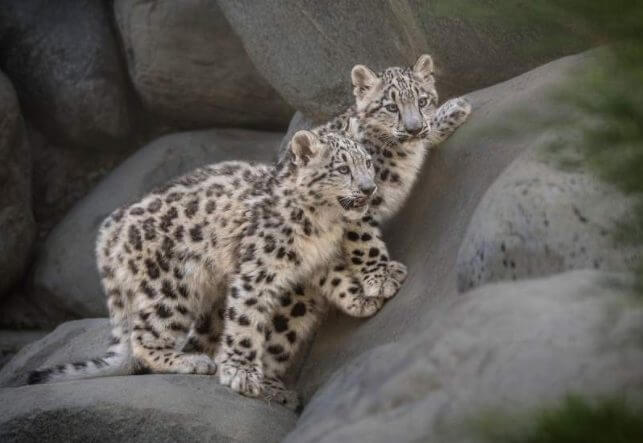
Snow leopards are equipped with extra-large claws. These claws are not only great for hunting, because they also keep the snow leopard’s feet from sinking into the snow. In a way, facts about snow leopard is that the paws are like a pair of snow boots for the snow leopards.
13. Can’t Roar
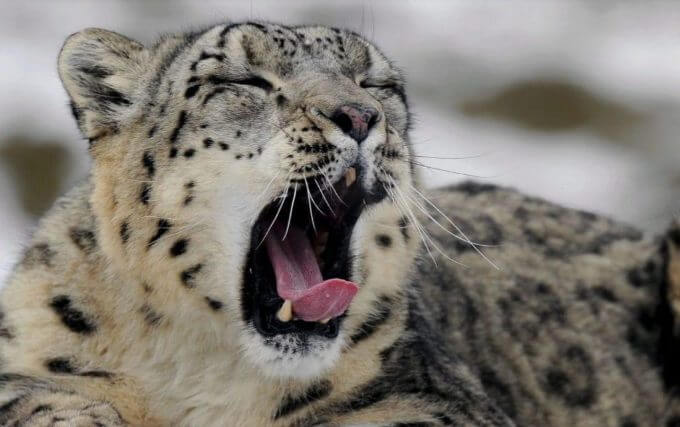
Even though snow leopards are in the same group as tiger, lion, and jaguar, they are not able to roar due to their throat. Instead, they can make similar sounds that other cats can create, such as growl, mew, yowl and chuffs or puffing sound.
14. Solitary Animals
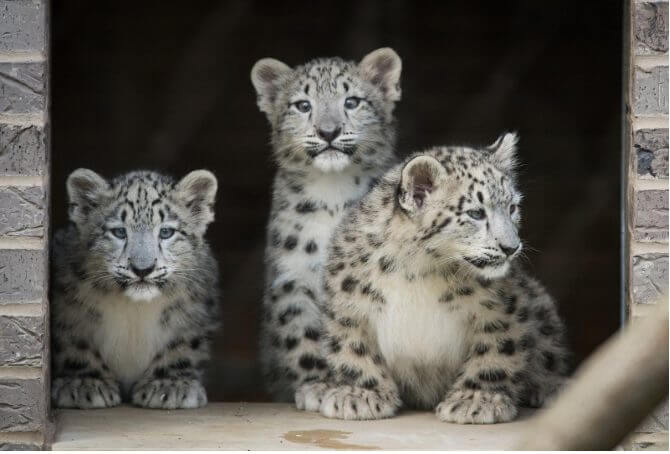
Snow leopards tend to gather in a social group as they enjoy being together, especially during mating. However, they like to live in solitude, which makes them rarely seen by others. When hunting, they regularly roam the other areas by themselves. This can go on the radius of hundreds of square kilometers.
Therefore, you can see them together during the breeding season. If not, you might witness the female snow leopards taking care of their young children. The children will leave after they are around two years old.
15. Constantly Moving
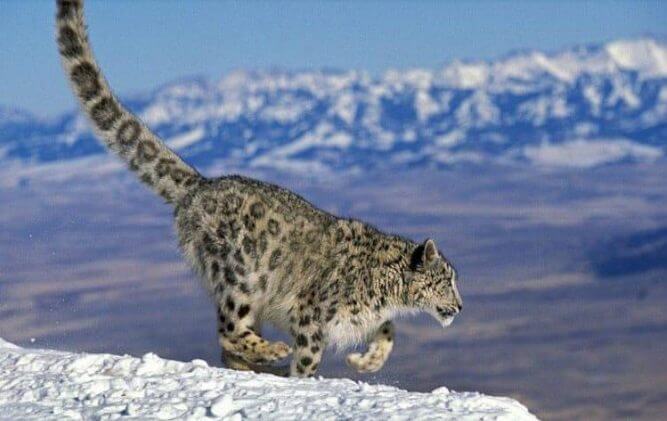
Because snow leopards constantly move to hunt, they are nomadic animals. They will leave signs on their houses to prevent other cats to stay there.
They can cover great distances and do this facts about snow leopard because of their habitat mapping technology. Snow leopards can travel in a short amount of time. Some snow leopards have been documented to travel 44 kilometers in open desert overnight.
16. Crepuscular Animals
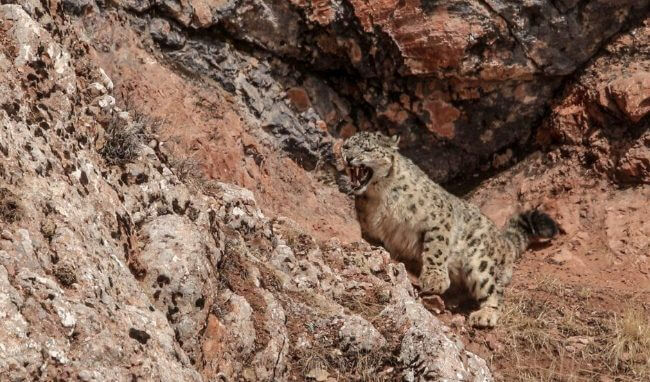
As they are more active at dawn and dusk, snow leopards are considered crepuscular animals. However, they are very adaptive and can adjust their behavior depending on the presence of human.
They will be active at night if humans live nearby. If they find little to no people living nearby, they may be active on daylight.
17. The Prey
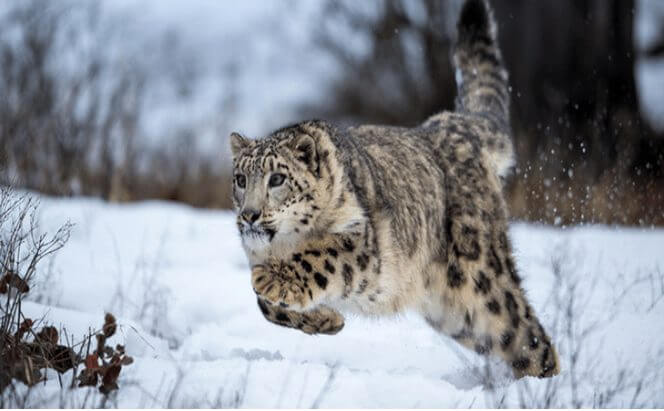
Snow leopards are powerful hunter. They can hunt on preys that are three times its own weight. They also eat smaller animals, such as rabbits, guinea pigs and game birds.
Most often, they will hunt large wild goats and blue sheep, but this will depend on the location of their houses. They also found to enjoy grass, twigs and other vegetation, which is very common among cats.
It takes them three to four days to finish their meal as they eat every few hours, so they will remain nearby to defend the foods during those times. On average, they hunt every 8 to 10 days.
18. Gestation Period
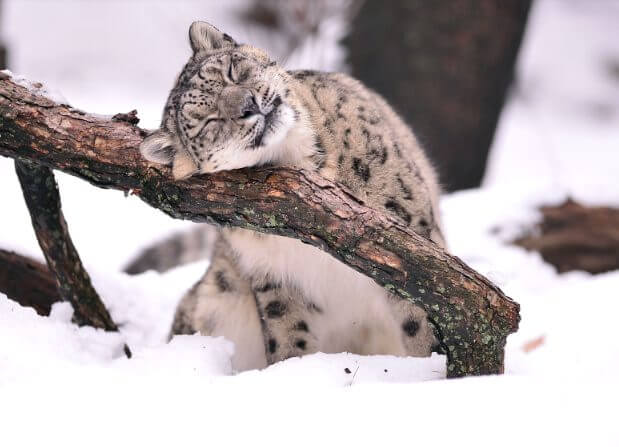
Between January and March, snow leopards will gather for the mating season. They won’t travel alone during this time, but instead travel together while copulating. Afterwards, they will travel solo again and the offspring is raised fully by the female snow leopards.
The snow leopards will return to their houses to give birth. The gestation period is around 93 to 110 days, which means they will give birth to 2 or 3 children at a time in June or July.
19. The Newborns
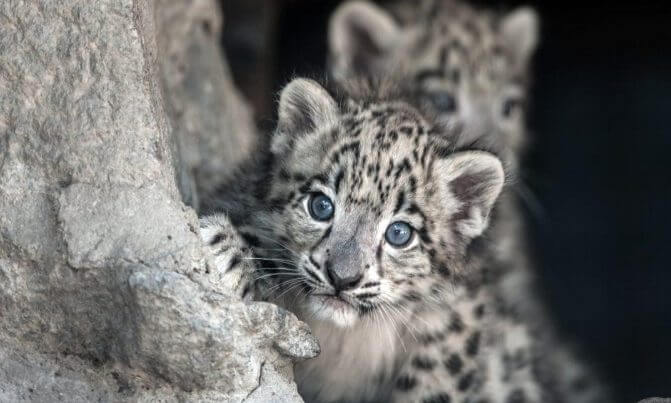
Snow leopards can give birth up to five children at once, weighing around 320 – 767 grams each. The newborns are small and can’t open their eyes for the first 7 days. They can start eating solid food after 2 months, and begin following the mother to learn the next month.
They will part form their mother after 2 years and can begin having their own children since. The males are sexually mature at the age of 4, and can live for 15-22 years.
Being one of the big cats, there are no doubt how exalted snow leopards are. However, that is the reason why snow leopards are sought after by a lot of people.
They are rare and hard to be found, yet humans are still finding ways to exploit them. Having the body features that are perfect for adjusting to the cold and height, human has been having a tough time reaching their habitat.
However, they are still declining in population and not many of them are left in the wild. Poaching, habitat loss and killings are threatening the survival of snow leopards.
These impressive facts about snow leopard show how majestic this creature is, and hopefully they will be able to survive from extinction.


